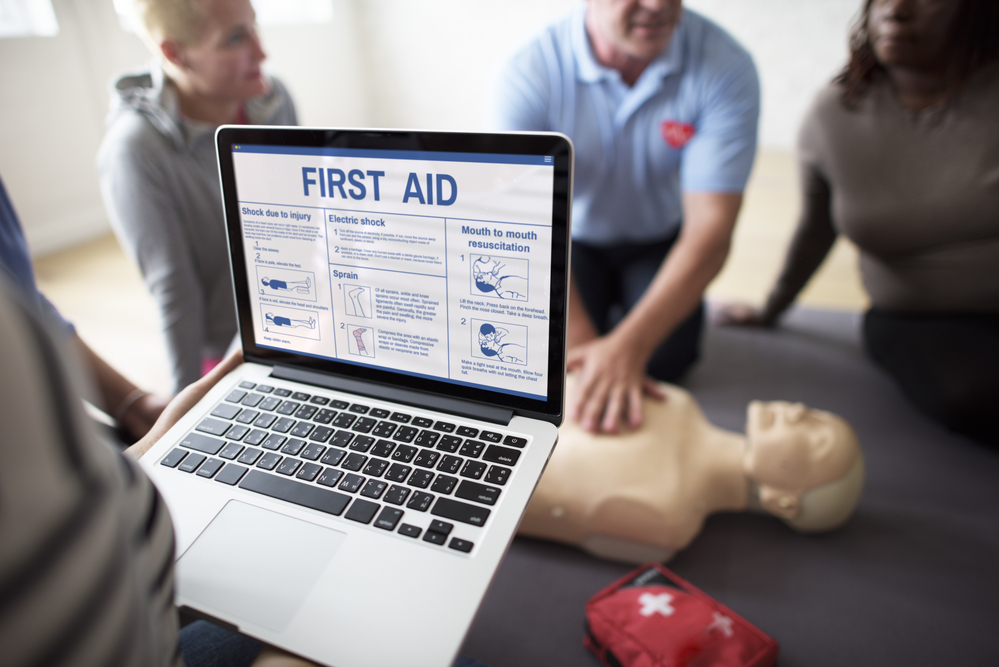First Aid in Healthcare: Essential Skills You Can Learn Online

First aid is a critical set of skills that can make a significant difference in healthcare, especially in emergencies. Whether you're a healthcare professional or just someone who wants to be prepared in case of an emergency, learning essential first aid skills online can be a convenient and effective way to ensure you're equipped to handle medical situations. Here’s an overview of essential first aid skills that can be learned online:
1. CPR (Cardiopulmonary Resuscitation)
- Why It's Important: CPR is a life-saving technique used when someone's heart stops beating or they stop breathing. CPR helps maintain blood flow to the brain and other vital organs until emergency services arrive.
- What You Can Learn: The basic steps of CPR for adults, children, and infants, as well as how to use an automated external defibrillator (AED).
- Online Learning: Many platforms offer video demonstrations, quizzes, and certifications for CPR training.
2. First Aid for Choking
- Why It's Important: Choking occurs when an object blocks the airway, preventing breathing. Knowing how to assist someone who is choking could save their life.
- What You Can Learn: The Heimlich maneuver (or abdominal thrusts) for adults and children, back blows for infants, and how to assess the severity of a choking episode.
- Online Learning: Interactive courses show step-by-step methods for clearing the airway and using first aid in various choking scenarios.
3. Wound Care
- Why It's Important: Proper wound care prevents infection and promotes faster healing. This includes managing cuts, abrasions, burns, and more serious injuries.
- What You Can Learn: How to clean and dress a wound, how to apply pressure to stop bleeding, how to recognize infection signs, and how to treat burns.
- Online Learning: Videos and diagrams explain the different types of wounds and appropriate treatment steps.
4. Fractures and Sprains
- Why It's Important: Bone fractures or sprains are common injuries, and knowing how to immobilize the injury until professional care arrives is crucial.
- What You Can Learn: How to recognize fractures and sprains, how to apply splints, and the signs that require professional intervention.
- Online Learning: Many online courses include demonstrations of how to safely stabilize and treat fractures and sprains with household materials.
5. Managing Seizures
- Why It's Important: Seizures can be frightening, but proper first aid can help reduce risk and injury during an episode.
- What You Can Learn: How to recognize the signs of different types of seizures, what to do during a seizure, and how to care for someone afterward.
- Online Learning: Learn to assess the type of seizure and the most effective interventions to ensure safety.
6. Recognizing and Responding to Heart Attacks
- Why It's Important: Heart attacks require immediate attention. Quick action can save lives by getting someone the help they need as fast as possible.
- What You Can Learn: How to recognize the symptoms of a heart attack, including chest pain, shortness of breath, and dizziness. Learn how to provide immediate support, such as administering aspirin or preparing for CPR.
- Online Learning: Online courses often include video simulations that demonstrate how to react when heart attack symptoms appear.
7. Dealing with Allergic Reactions (Anaphylaxis)
- Why It's Important: Severe allergic reactions can be life-threatening, and timely intervention with epinephrine or other first aid measures can prevent fatalities.
- What You Can Learn: The symptoms of anaphylaxis, how to use an EpiPen, and when to call for emergency medical help.
- Online Learning: Interactive modules can walk you through the steps of recognizing and treating severe allergic reactions.
8. Burn Treatment
- Why It's Important: Burns can range from minor to severe, and it’s essential to know the proper first aid techniques to reduce damage and pain.
- What You Can Learn: How to treat different types of burns (first, second, third degree), when to cool burns with water, and how to avoid infection.
- Online Learning: Tutorials teach how to assess the severity of burns and offer step-by-step guidance for treatment.
9. Managing Shock
- Why It's Important: Shock is a life-threatening condition that can occur after trauma, blood loss, or severe illness. Early intervention can improve outcomes.
- What You Can Learn: The signs of shock, how to position a person in shock, and how to manage it until professional medical help arrives.
- Online Learning: Online courses often include scenarios and simulations to teach you how to recognize shock and how to react quickly.
10. Mental Health First Aid
- Why It's Important: Mental health crises, such as panic attacks, anxiety, and suicidal thoughts, can be just as urgent as physical emergencies. Knowing how to support someone in emotional distress is essential.
- What You Can Learn: How to recognize signs of mental health distress, how to communicate with someone who is struggling, and how to direct them to appropriate resources.
- Online Learning: Many organizations offer mental health first aid training, focusing on listening, supporting, and referring individuals to professional help.
By learning first aid skills online, you can become better prepared to respond effectively to emergencies, whether at home, work, or in public. Plus, many online first aid courses provide certifications, which can add value if you're pursuing a career in healthcare or if you simply want to gain life-saving skills.
